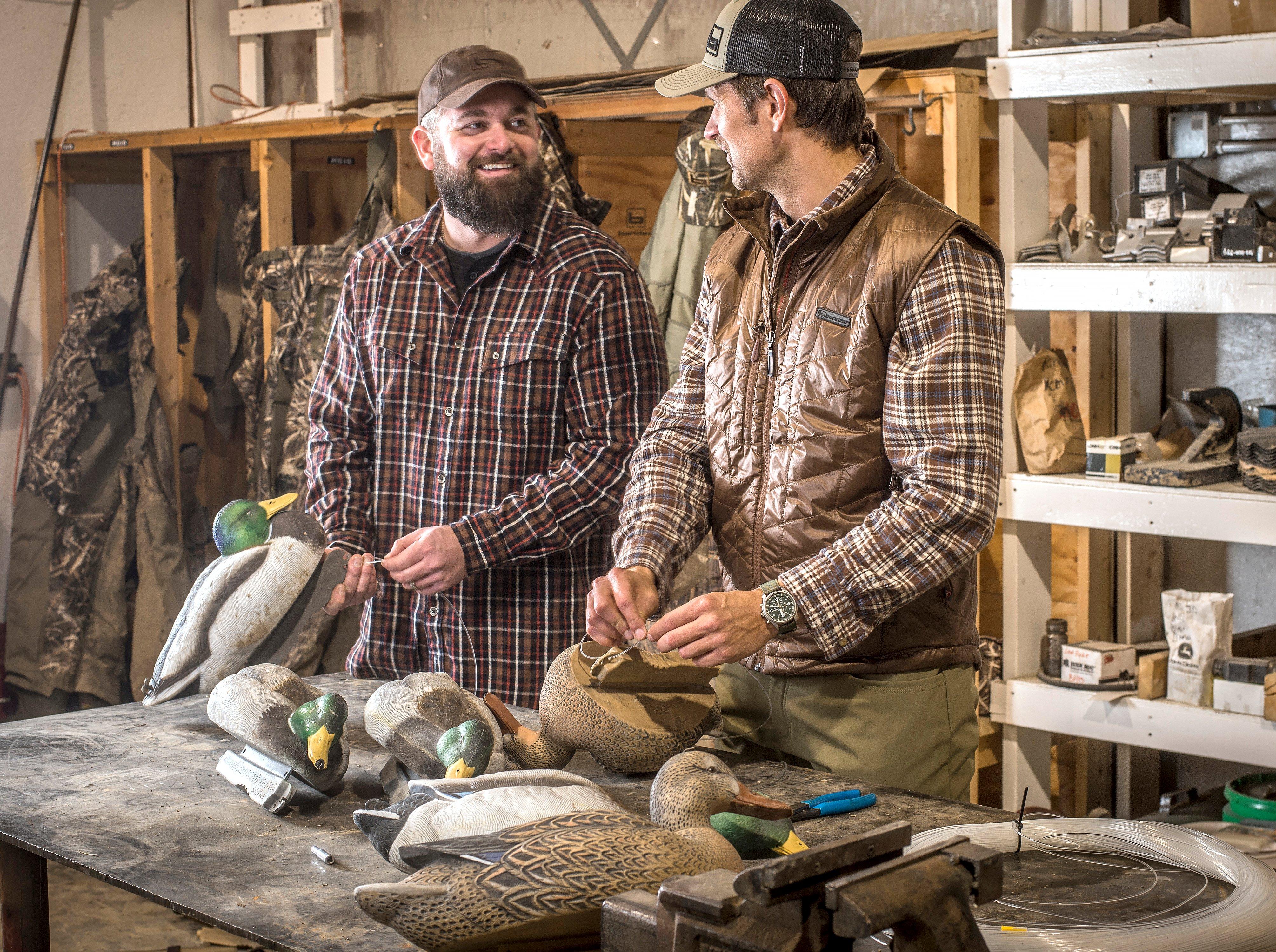Is your duck hunting gear in shambles from the previous year? Here’s how the pros keep their equipment in good shape for opening day

Don’t get caught in a rush. Have your gear ready long before the opener. Photo by Banded
Duck season typically ends in a blur, with Northern hunters battling ice and preparing for Christmas, and Southern guys jumping immediately into light-goose hunting.
And in that rush, gear can suffer.
Admit it, you’ve been there. You shove decoys into the garage, throw blinds in a shed or trailer, and then promise to make things right in summer. Then, before you know it, teal season is weeks away, and you’ve done nothing.
Don’t let that happen this year. Follow the example of folks who chase ducks and geese for a living. They know the importance of off-season blind and decoy maintenance and have developed easy programs to keep gear in top operating condition.
TONY VANDEMORE
Before the season, Vandemore, owner of Habitat Flats near Sumner, Missouri, pumps the water out his pits and then grasses them to ensure concealment. He’ll also brush in wooden stand-up blinds.
“I don’t take the brush off the stand-ups every year, but rather keep stuffing branches and adding to it,” he said. “Eventually, it gets a 3-D-type look with no edges, almost like a big brush pile.”
And his decoy program involves simple cleaning.
“Decoy-wise, outside of making sure they have rigs and weights on them, I don’t do much,” he said. “A little pressure washing, but nothing major.”
Don’t Miss: Bird Flu Numbers Down, Duck Numbers Up in NoDak, and More Waterfowl News
COOPER OLMSTEAD
Olmstead, also of Habitat Flats, begins his off-season regimen immediately after the season ends.
“Before putting away the blinds each year, we go through everything and make sure they are clean and dry,” he said. “That way, when we pull them out next fall, all we really have to do is add a little brush here and there to them.”
And he makes sure to strategically place mouse poison to keep pesky rodents out of trailers and containers.
“Other than that, we try to make sure that once we pack everything away for the off-season, it’s pretty much ready to go the following fall,” he said.
GRAHAM GRESETH
Greseth, owner of MaXXed Out Guides — which runs hunts in Minnesota, South Dakota, and Kansas — echoed Olmstead’s point about keeping mice away from equipment during storage.
“At that point, blinds are the biggest off-season worry,” he said. “Mice getting into blinds and making a mess is the biggest issue.”
He also pays close attention to full-body decoys before the season, typically washing the bodies and flocking, and sometimes repairing flocking.
“But with the evolution of silhouettes and bags, there’s very little decoy maintenance to do,” he said.
Don’t Miss: USFWS Closes Popular Missouri Refuge to Duck Hunting
JEREMY DERSHAM
Dersham, owner of Ridge and River Running Outfitters, which guides waterfowlers in southern Wisconsin and Pool 9 of the Mississippi River, goes all-out to prepare gear for the season.
“Waterfowl hunters have more gear than the law should allow,” he said. “All of my gear is hunted hard, and it’s not if things are going to break but when, so I want to have extras of most of my gear.”
Dersham rigs five to six dozen extra decoys on Texas-style rigs so he can swap them in and out of spreads as needed. He also readies spare long-lines for big diver rigs.
“My goal is to mirror the migration on any given day,” he said. “That may mean having strictly two to three species of waterfowl as decoys or eight to 10 species of waterfowl with varying decoy numbers.”
And because his hunters often shoot at low-flying diving ducks, many of his decoys take hits and must be repaired. He’ll also check swivels, carabiners, mother lines, and secondary lines for wear and replace them as needed.
“I want to have all my gear ready to go by Sept. 1 and have the ability to swap things in and out until the first week in December,” he said.










